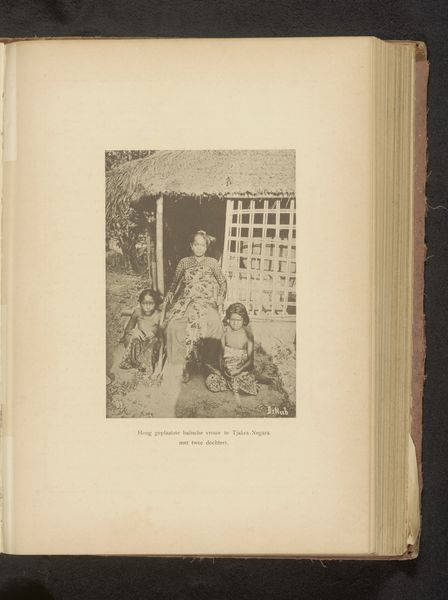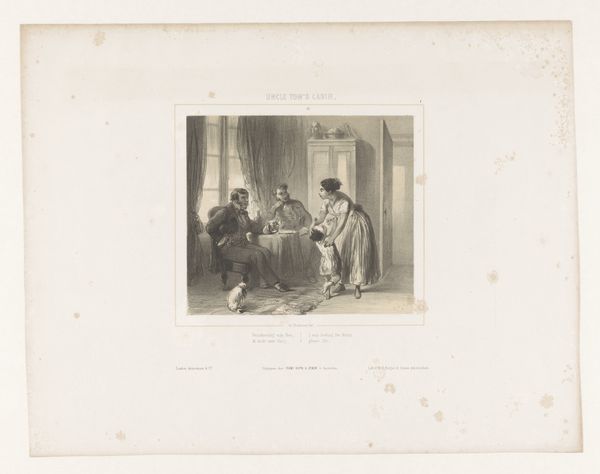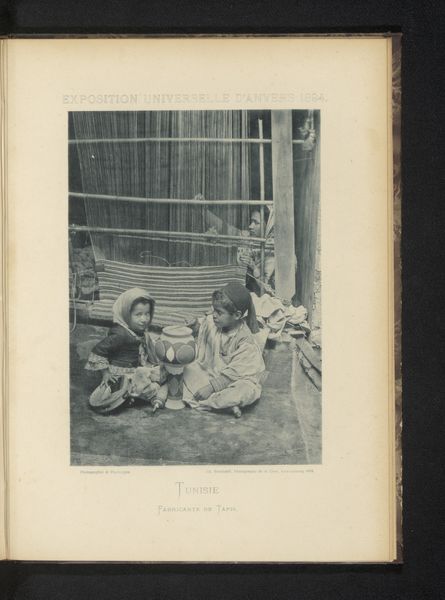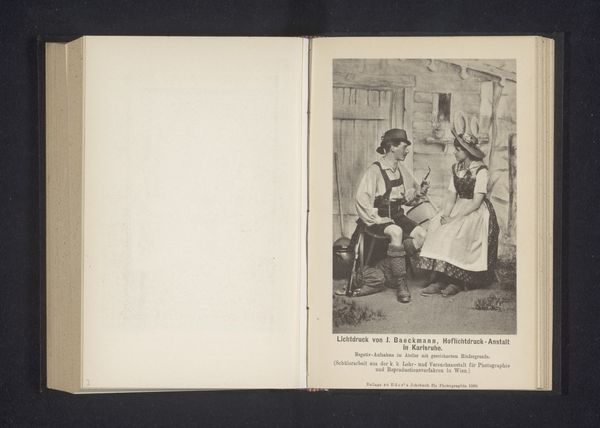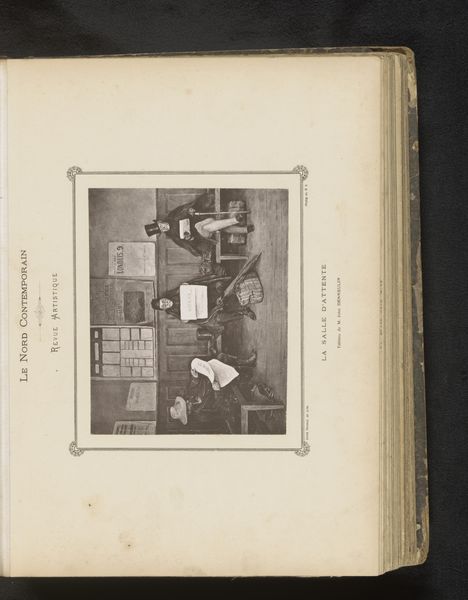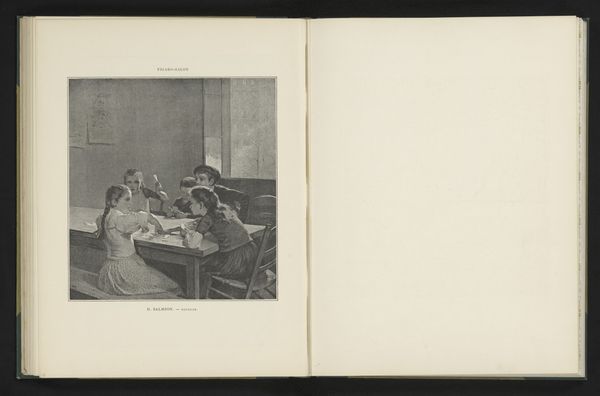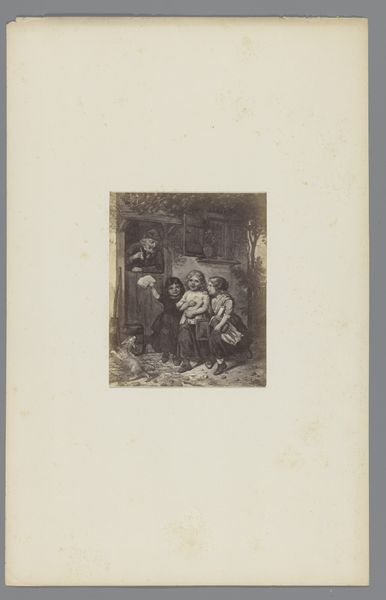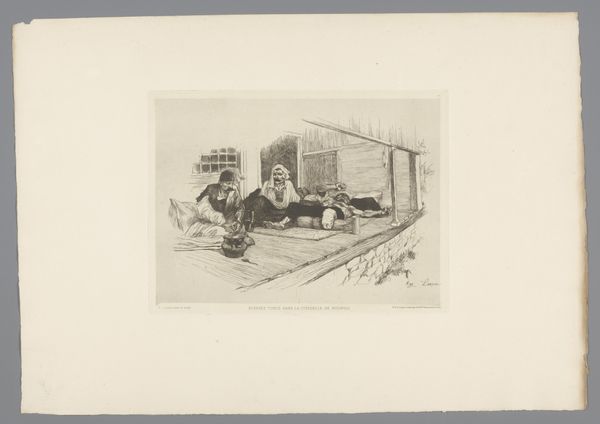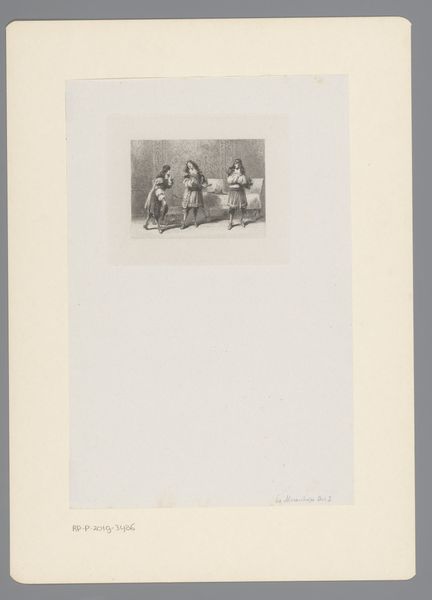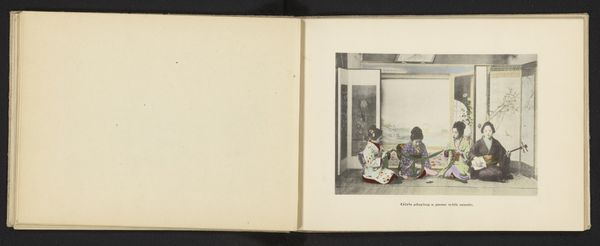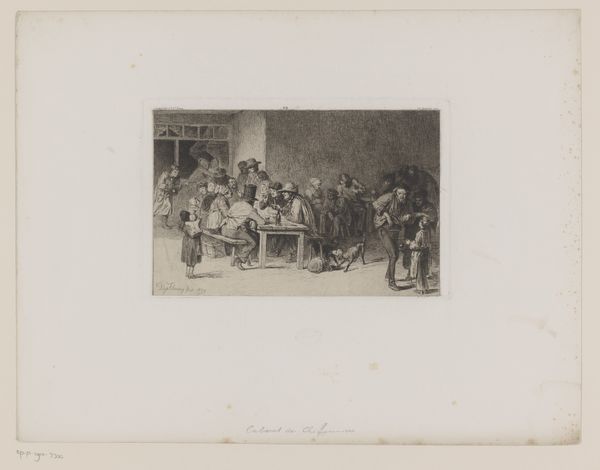
photography
#
photography
Dimensions: height 166 mm, width 117 mm
Copyright: Rijks Museum: Open Domain
Curator: This is a photograph titled "Drie onbekende vrouwen met manden onder parasols," or "Three Unknown Women with Baskets Under Parasols." It's attributed to Christiaan Johan Neeb, and dates to before 1897. Editor: Immediately, there's a quiet stillness to this image. The sepia tones soften the details, creating a sense of faded memory. There's a strong, perhaps illusory, focus on the geometrical arrangement of the parasols. Curator: Yes, Neeb uses tonal values effectively, focusing the contrast around the central figures. Note how the repeating circular forms – the baskets, parasols – create a harmonious composition. The thatched roofs in the background add another textural layer. Editor: It’s impossible to separate this image from the historical context of Dutch colonialism and the exoticization of colonized people, especially considering its elements of what appears to be Orientalism. These women, whose identities remain unknown, are relegated to anonymous subjects within a visual power dynamic. Curator: Your reading acknowledges a certain post-colonial understanding, but the formal components cannot be ignored either. The almost classical triangular arrangement of the figures creates a certain kind of pictorial harmony and echoes traditional portraiture formats. Editor: But that sense of harmony is precisely what makes me uneasy. Is this harmony reflective of genuine cultural understanding, or is it merely the imposition of a Western aesthetic sensibility onto a complex social reality? It reflects an orientalist, if not an ethnographic, fascination and simultaneously suppresses the women's individuality. We should investigate what work and agency these baskets reflect. Curator: Fair enough, however, you can’t deny that from a purely compositional standpoint, the diagonals formed by the parasols lead the eye towards the central figure. Editor: While acknowledging your reading of those "diagonals," I find myself thinking about labor, representation, and the unacknowledged histories contained within this carefully staged scene. It really encourages one to research Neeb's broader body of work and explore similar visual representations of women during that time. Curator: Perhaps by examining these visual constructions through varied perspectives we can engage with and analyze Neeb's photograph and prompt questions about its cultural legacies. Editor: Yes, and perhaps confront and deconstruct the long-lasting and potentially destructive effects and influences that those legacies still leave on us today.
Comments
No comments
Be the first to comment and join the conversation on the ultimate creative platform.

